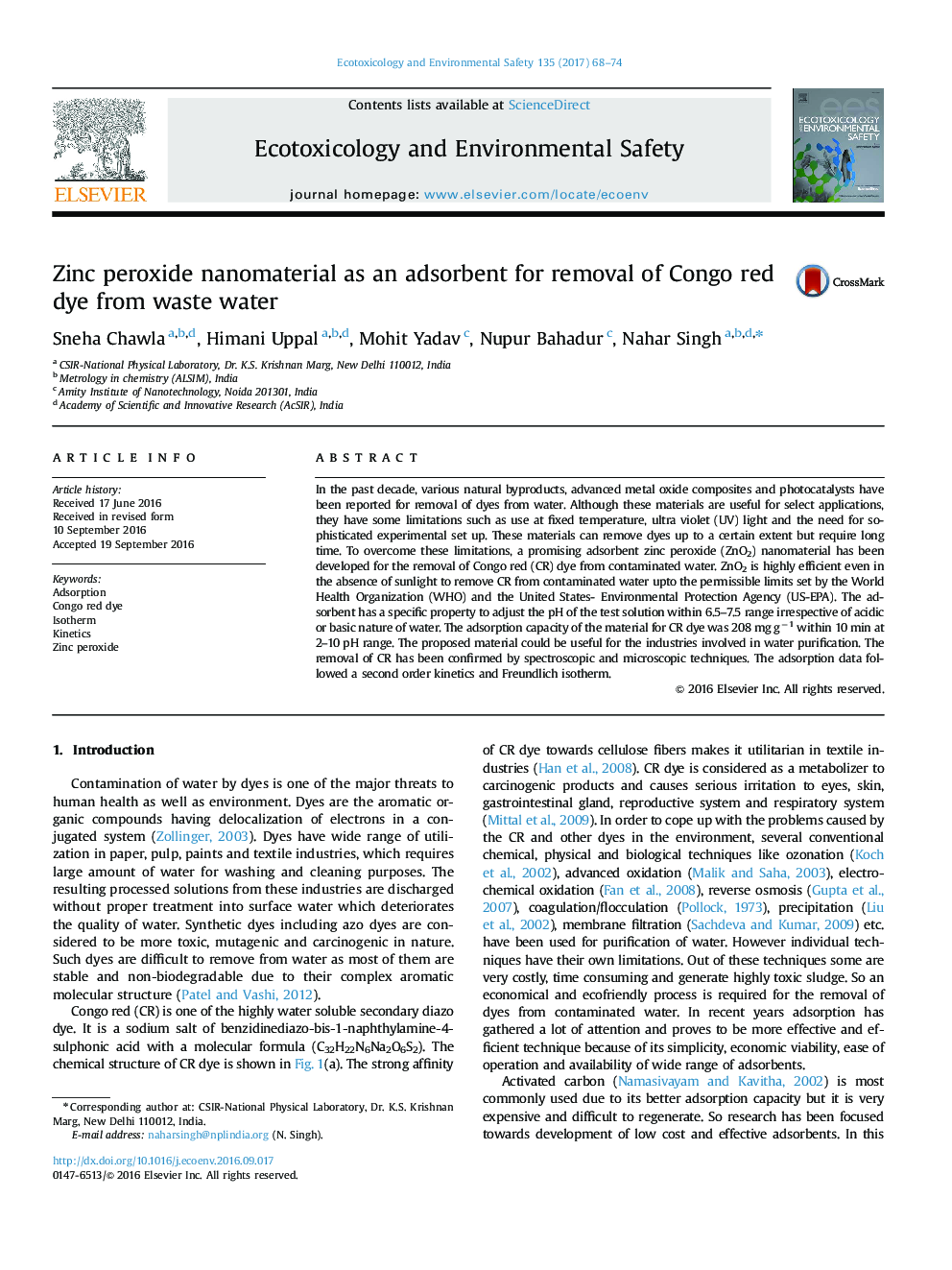| Article ID | Journal | Published Year | Pages | File Type |
|---|---|---|---|---|
| 4418995 | Ecotoxicology and Environmental Safety | 2017 | 7 Pages |
Abstract
In the past decade, various natural byproducts, advanced metal oxide composites and photocatalysts have been reported for removal of dyes from water. Although these materials are useful for select applications, they have some limitations such as use at fixed temperature, ultra violet (UV) light and the need for sophisticated experimental set up. These materials can remove dyes up to a certain extent but require long time. To overcome these limitations, a promising adsorbent zinc peroxide (ZnO2) nanomaterial has been developed for the removal of Congo red (CR) dye from contaminated water. ZnO2 is highly efficient even in the absence of sunlight to remove CR from contaminated water upto the permissible limits set by the World Health Organization (WHO) and the United States- Environmental Protection Agency (US-EPA). The adsorbent has a specific property to adjust the pH of the test solution within 6.5-7.5 range irrespective of acidic or basic nature of water. The adsorption capacity of the material for CR dye was 208 mg gâ1 within 10 min at 2-10 pH range. The proposed material could be useful for the industries involved in water purification. The removal of CR has been confirmed by spectroscopic and microscopic techniques. The adsorption data followed a second order kinetics and Freundlich isotherm.
Related Topics
Life Sciences
Environmental Science
Environmental Chemistry
Authors
Sneha Chawla, Himani Uppal, Mohit Yadav, Nupur Bahadur, Nahar Singh,
